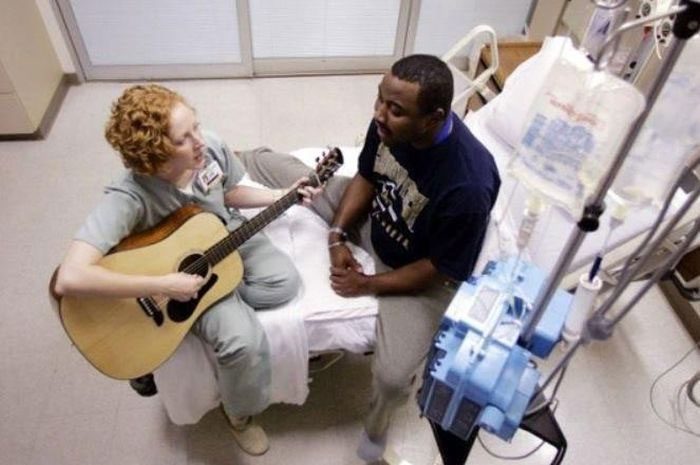According to a study published in the journal Frontiers in Pain Research, favorite songs can reduce people’s perception of pain. Emotional songs have been found to be the most effective pain relief remedy. For those who are deaf, haptic technology suits—which can create a tactile experience through force or vibration—also help them overcome social stigmas.
The study was conducted by Darius Valevicius, a PhD in neuroscience at the University of Montreal, Canada. In the experiment, 63 participants brought along their two favorite songs, with the only requirement being that the songs needed to last at least 3 minutes and 20 seconds.
Specifically, the two songs included their all-time favorite and a song they would choose if stranded on a deserted island. The researchers also asked participants to select one from seven relaxing songs that they had never heard before.

Music can soothe the soul, but according to a recent study in Canada, it can also reduce physical pain for listeners.
During the process, researchers placed a hot object—similar to the sensation of pain from a cup of boiling tea on the skin—on the inner elbow of the participants’ left arm.
When evaluating their experiences, participants reported feeling less pain while listening to their favorite songs compared to listening to the unfamiliar relaxing song or in silence. The shuffled tracks did not reduce pain either, which researchers viewed as evidence that music carries more significance than just serving as a distraction from unpleasant experiences.
After interviewing participants about the songs they brought and assessing their pain feelings, researchers discovered that listeners of sad and emotional songs felt less pain compared to those listening to relaxing or cheerful songs.
Valevicius hypothesizes that to avoid overwhelming the brain with surrounding stimuli, it filters out anything it deems excessive or irrelevant. In this case, the brain might be focusing on the music and filtering out some pain messages. Although the body still feels pain, the messages that allow us to perceive it may not be transmitted.
“When people are listening to music they like, according to our assessment, it can reduce the pain we perceive by about 10%,” Valevicius stated.
A few months prior, at a concert in New York, USA, audiences, including many deaf individuals, wore haptic technology suits—technology that can create a tactile experience through force or vibration, alongside bracelets and ankle bands to experience music through vibrational movements on their skin.
Each instrument vibrated at different locations on the body, with the violin positioned on the chest, bass resonating on the back, and horns on the shoulders.
With this technology, regardless of the audience’s ability to hear, everyone could feel the highs and lows of the music through physical sensations.

At the concert in New York, USA, audiences enjoyed music through tactile experiences created by force or vibration, along with bracelets and necklaces.
This experience also served as an opportunity to connect people who otherwise might seem to have nothing in common. After the concert, many deaf individuals reported feeling much happier, as they hadn’t felt such beautiful sounds and music in a long time.
Therefore, in the future, technologies that help people connect more closely with music for medical purposes will be researched and developed further.


















































